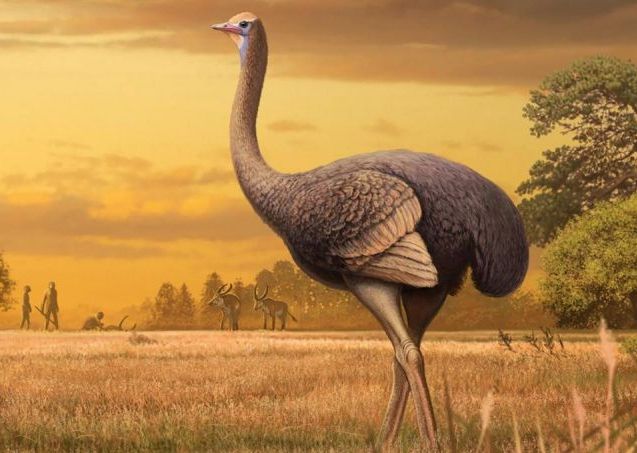Difference between revisions of "Rhea"
Tao alexis (talk | contribs) |
Tao alexis (talk | contribs) |
||
| Line 21: | Line 21: | ||
Flightless birds native to South America's grasslands. There are two major species: the greater and lesser rhea. The greater rhea is more commonly found in the pampas and lowlands (lower than 5,000 feet) and near water, while the lesser rhea inhabits shrublands and the Andean plateau, up to 15,000 feet. | Flightless birds native to South America's grasslands. There are two major species: the greater and lesser rhea. The greater rhea is more commonly found in the pampas and lowlands (lower than 5,000 feet) and near water, while the lesser rhea inhabits shrublands and the Andean plateau, up to 15,000 feet. | ||
| − | [[File: | + | [[File:Rhea.jpg|left|350px|thumb]] |
The greater rhea weighs between 44 and 60 lbs on average, while the lesser rhea weights between 33 and 63 lbs. Like ostriches, the rhea typically run when threatened, able to reach speeds of up to 37 mph (132 hexes per round), but they also possess sharp talons to defend themselves from predators. | The greater rhea weighs between 44 and 60 lbs on average, while the lesser rhea weights between 33 and 63 lbs. Like ostriches, the rhea typically run when threatened, able to reach speeds of up to 37 mph (132 hexes per round), but they also possess sharp talons to defend themselves from predators. | ||
Revision as of 04:02, 30 October 2023
| Species | bird |
| No. Appearing | 5–20 |
| Behaviour | herd |
| Range | alpine, barrens, savanna, steppe |
| Size | 5 ft. at head |
| Weight | 52 lbs. |
| Intelligence | 1 |
| Armour Class | 7 |
| Hit Dice | 1 |
| Action Points | 5 |
| Max. Stride | 21 |
| THAC0 | 20 |
| Hp/Die | d4 |
| Attack Forms | 2: two talons |
| Damage | talons (1–6) |
| Special Attacks | none |
Flightless birds native to South America's grasslands. There are two major species: the greater and lesser rhea. The greater rhea is more commonly found in the pampas and lowlands (lower than 5,000 feet) and near water, while the lesser rhea inhabits shrublands and the Andean plateau, up to 15,000 feet.
The greater rhea weighs between 44 and 60 lbs on average, while the lesser rhea weights between 33 and 63 lbs. Like ostriches, the rhea typically run when threatened, able to reach speeds of up to 37 mph (132 hexes per round), but they also possess sharp talons to defend themselves from predators.
As their diet is primarily insect and plant-based, rhea consume pebbles to grind their food, but are quite attracted to sparkling objects and may try to swallow them too. In the summer, the birds flock in groups of 10 to 100 (the greater rhea) and 5 to 30 (the lesser rhea). Rheas nest in the winter, each male nesting five or so eggs from each of their two to twelve female partners (10 to 60 total eggs). Rheas will sacrifice some eggs as decoys by placing them further from the nest to ensure predators do not find the main nest. The eggs weigh around 21 oz and hatch after 4 to 6 weeks of incubation.
The usual predators of rheas are jaguars and cougars, while caracaras and armadillos may prey on their nests. Rhea leather, oil, meat and feathers are all common products obtained from hunted or farmed rheas. The leather is often used for cloaks while the oil makes up soaps and cosmetics.
Rheas are often hunted on horseback and can be quickly immobilized by a set of bolas.
See Bestiary
